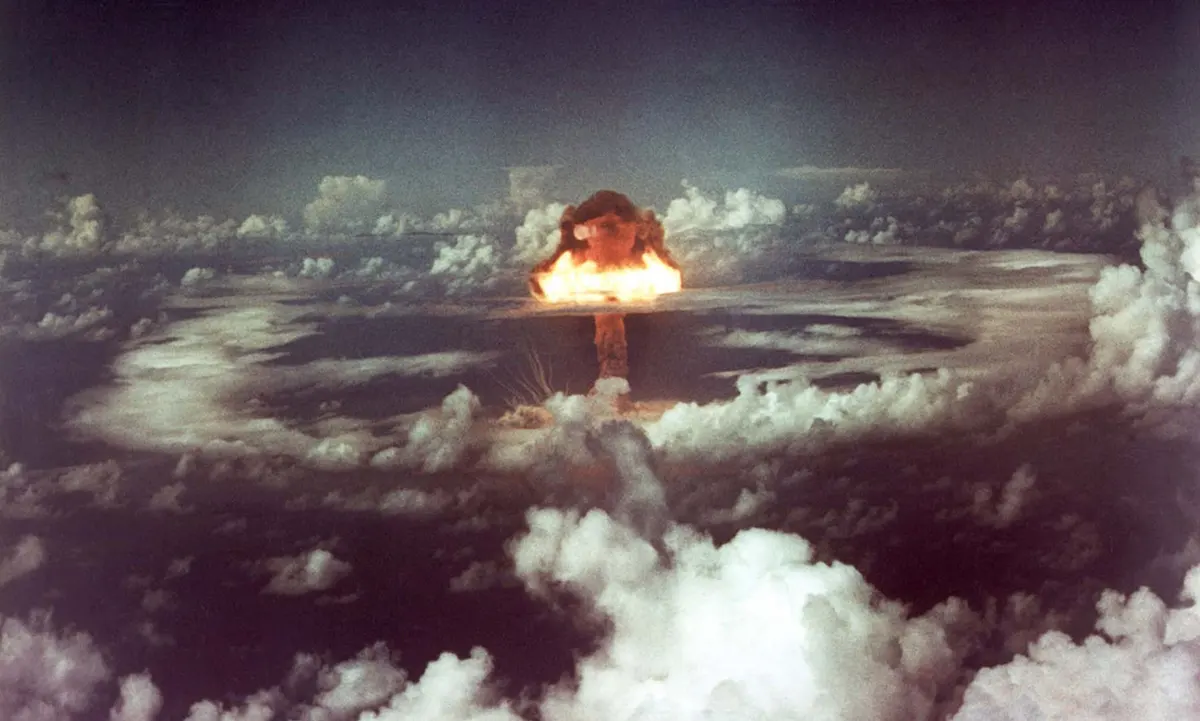Brussels, (Brussels Morning Newspaper) – How does nuclear war kill you? It’s easy to see why people are so worried. A nuclear war between the United States and North Korea looked imminent last year. India and Pakistan are at risk of renewing their decades-long conflict at any moment, both countries possessing nuclear weapons. In addition, ever since the first days of the Cold War, the United States and Russia, the world’s two leading nuclear powers, have kept their warheads aimed at each other. Let’s find out what happens to people when a nuclear bomb goes off.
What happens After Nuclear War?
In a matter of microseconds after the detonation of a nuclear weapon, the energy released in the form of X-rays warms the atmosphere around it, forming a fireball of very hot air. Inside the fireball, the temperature and pressure are so high that all matter is converted into a hot plasma consisting of bare nuclei and subatomic particles. This is analogous to what happens at the sun’s core, which has a temperature of several million degrees.
The fireball that results from the airburst explosion of a 300-kiloton nuclear weapon, such as the W87 thermonuclear warhead deployed on the Minuteman III missiles currently in service in the US nuclear arsenal, has the potential to grow to a diameter of more than 600 meters (2,000 feet). It can remain dazzlingly bright for several seconds before its surface cools.
Read More: Find Out Nuclear Targets in Europe (2022 Updated)
How Does nuclear war kill you?
It is estimated that much over a third of the explosive energy of a thermonuclear weapon is released as light from the fireball, which may start fires and inflict serious burns at considerable distances. First-degree burns might be sustained up to 13 kilometres (8 miles) from the epicentre of a nuclear explosion with a yield of 300 kilotons, thanks to the thermal flash.
A 300-kiloton explosion, when released as an airburst, would cause a blast with an overpressure of more than 5 pounds per square inch (or 0.3 atmospheres) up to 4.7 kilometres (2.9 miles) from the target. Less than 10 seconds after the explosion, this kind of pressure would be enough to demolish most homes and gut buildings and inflict widespread casualties.
Radioactive fallout
After the nuclear explosion releases most of its energy in direct radiation, heat, and blast, the fireball cools and rises to form a mushroom cloud. Its radioactive brew of shattered atoms will fall out when the wind blows. Radioactive fallout and delayed radioactivity will expose post-war survivors to near-lethal amounts of ionizing radiation.
The bomb’s fission production and burst height determine fallout contamination. Weapons of hundreds of kilotons may threaten thousands of square kilometres downwind. Short-lived isotopes, the most energetic and harmful to biological systems, dominate radiation levels first. To reduce radiation levels, officials advise remaining inside for at least 48 hours. Fallout’s acutely fatal consequences will endure days to weeks.
Estimating fallout fatalities is challenging since its effects are delayed. The number of deaths and injuries will depend on what people do after an explosion. Buildings will fall around an explosion, leaving survivors without cover. A 300-kiloton nuclear detonation will provide 500 Roentgen equivalent men to survivors within 460 meters (1,500 ft) (rem). The US Nuclear Regulatory Commission warns anyone exposed to 500 rem of radiation all at once will likely die without medical care.
However, a 300-kiloton nuclear explosion that closes to ground zero would likely burn and crush everybody. The acute radiation zone is less than other immediate consequences as nuclear bomb output increases.
In the first 24 hours after a 300-kiloton nuclear weapon exploded in a metropolis like New York, approximately one million people would die and almost twice that many would be seriously injured. Nearby survivors were rare.
Drops in Food Production
After a nuclear war, the atmosphere, surface, and seas will change, affecting food production worldwide. Growing seasons, temperatures, light, precipitation, and other elements affect agriculture. For decades, a nuclear war will change all of those things globally.
After a nuclear war, food calories in each country will plummet, placing millions at danger of famine. Shifts in animal feeding and crop production and consumption would not be enough to offset the worldwide loss of calories.
Conclusion
The majority would see negative effects on the agricultural food systems of people who make it through a nuclear war and its early aftermath. So, if you’re wondering how does nuclear war kill you? Globally, a nuclear war’s immediate and long-term effects would be catastrophic, leading to the deaths of hundreds of millions or maybe billions of people due to lack of food.



